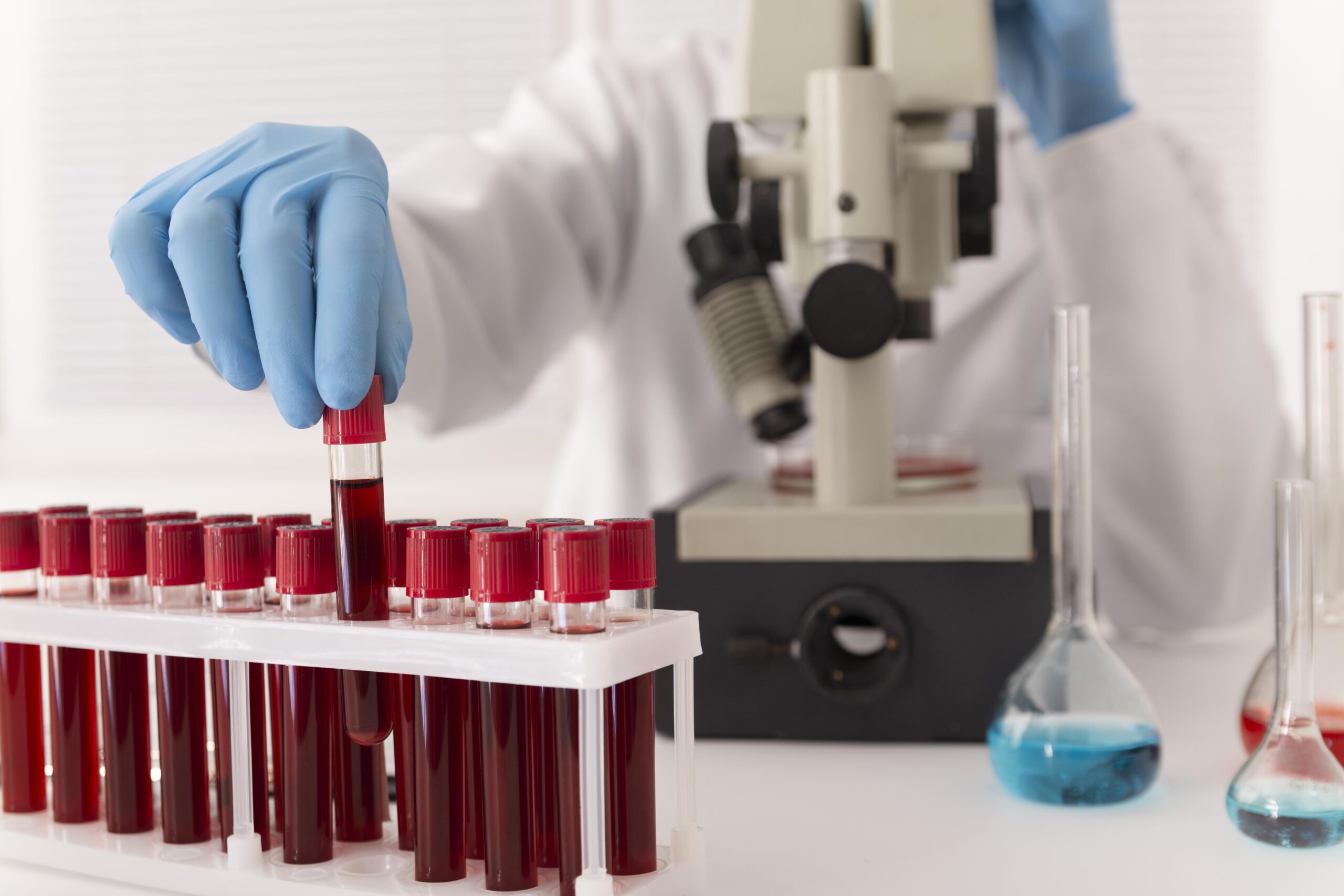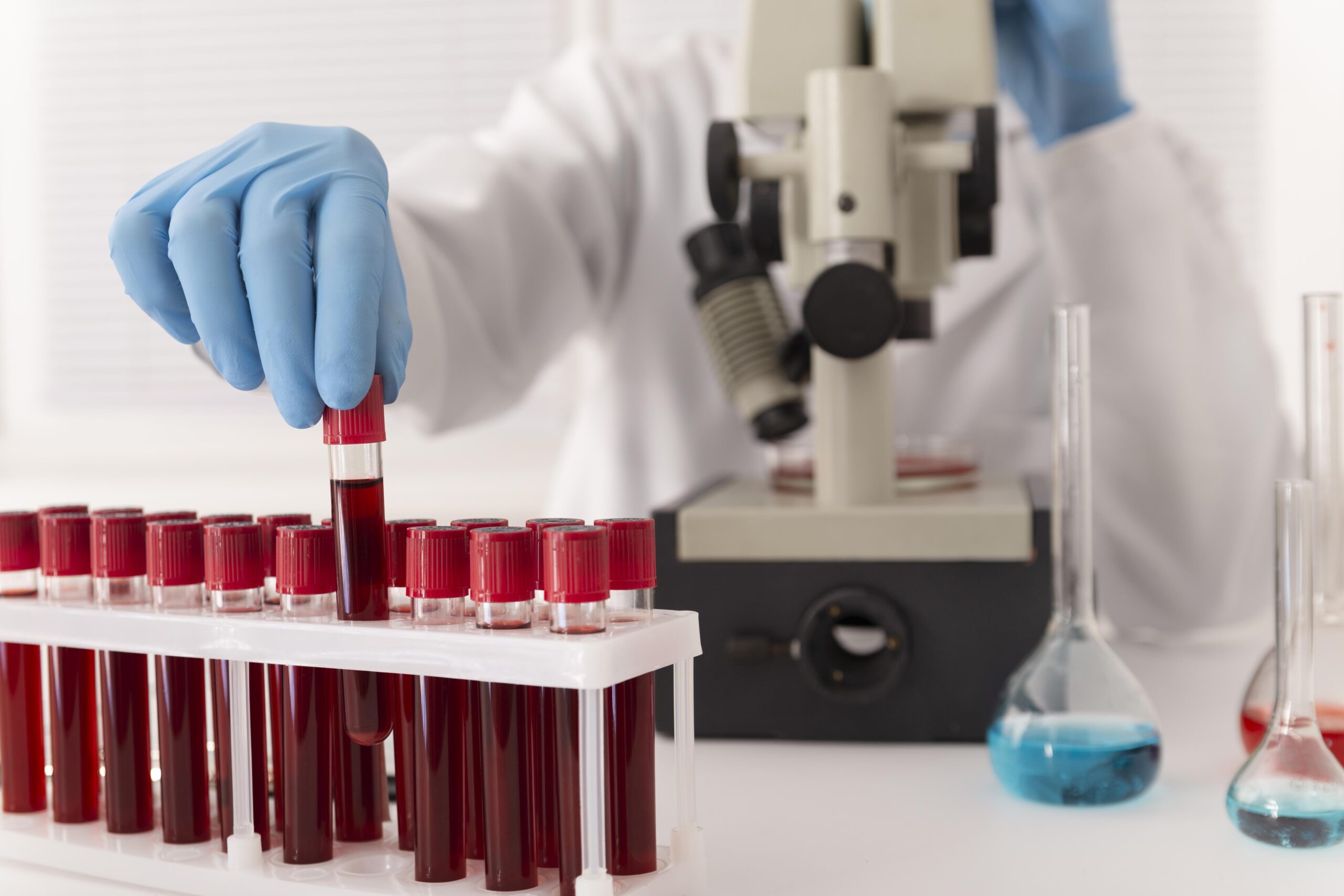Leukocytosis is a condition – that happens when the number of white blood cells increases in the body. It is a mechanism that causes, for example, the release of additional leukocytes from the bone marrow, and the rate of white blood cell multiplication increases.
It is essential to determine which group of leukocytes has increased because the accuracy of the diagnosis will depend on it. The specialist does it while performing a blood smear. The laboratory assesses the maturity of leukocytes.
There are several conditions where leukocytosis may occur in a completely healthy person, the so-called physiological leukocytosis![]() . Physiologically, an increased level of leukocytes occurs:
. Physiologically, an increased level of leukocytes occurs:
When white blood cells are elevated in such situations, the condition is normal. It results from the physiological circulation of leukocytes. In the body, a significant group of leukocytes is constantly attached to the walls of blood vessels and is not subject to circulation. In the situations mentioned above, this group is mobilized and enters the circulation, which causes the leukocyte limit in the blood to be exceeded.
White blood cells, also known as leukocytes![]() , are, apart from erythrocytes (red blood cells) and thrombocytes (platelets), blood components. They are a necessary immune system element produced in the bone marrow, thymus, spleen, and lymph nodes.
, are, apart from erythrocytes (red blood cells) and thrombocytes (platelets), blood components. They are a necessary immune system element produced in the bone marrow, thymus, spleen, and lymph nodes.
Several types of white blood cells differ in appearance and function. Granulocytes![]() , i.e., leukocytes containing numerous granules in the cytoplasm, are divided into:
, i.e., leukocytes containing numerous granules in the cytoplasm, are divided into:
In turn, agranulocytes![]() that do not have granules are divided into:
that do not have granules are divided into:
Depending on which type of white blood cells is elevated, it is referred to as neutrophilia, eosinophilia, lymphocytosis or monocytosis. Each of these conditions may be the result of different disease processes.

The number of leukocytes is most often tested together with other essential parameters in peripheral blood morphology![]() . It is a screening test performed to assess your health in general. Particular attention is paid to leukocytes when symptoms of infection or inflammation occur: fever and chills, muscle pain, headache, and others.
. It is a screening test performed to assess your health in general. Particular attention is paid to leukocytes when symptoms of infection or inflammation occur: fever and chills, muscle pain, headache, and others.
Determining their number is also helpful in case of suspicion of conditions such as:
The level of leukocytes in the blood is also tested in case of suspicion of proliferative diseases of the immune system and bone marrow – in the course of the above-mentioned diseases, the number of leukocytes may increase. It may be the result of incorrect, excessive production – this situation occurs, among others, in leukemias; diseases leading to the destruction of the bone marrow – they reduce its ability to produce white blood cells – e.g., myelodysplastic syndromes.
Leukocytes are a group of blood components that include lymphocytes, monocytes, neutrophils, eosinophils, and basophils. They differ in size, function, and number. Leukocytosis indicates a higher number of white blood cells, but only a more detailed examination allows us to determine what type of leukocytes are most abundant.
Lymphocytosis![]() means an increase in the number of lymphocytes in the peripheral blood and indicates inflammation, a recent bacterial (diphtheria, syphilis, tuberculosis), or viral infection. If the norm is greatly exceeded, lymphocytic leukemia may be a cause.
means an increase in the number of lymphocytes in the peripheral blood and indicates inflammation, a recent bacterial (diphtheria, syphilis, tuberculosis), or viral infection. If the norm is greatly exceeded, lymphocytic leukemia may be a cause.
Monocytosis![]() , i.e., excess monocytes, appears after removal of the spleen. It is also a sign of condition with bacteria, viruses, protozoa, cancer, collagenosis, Crohn's disease, liver cirrhosis, or rheumatoid arthritis.
, i.e., excess monocytes, appears after removal of the spleen. It is also a sign of condition with bacteria, viruses, protozoa, cancer, collagenosis, Crohn's disease, liver cirrhosis, or rheumatoid arthritis.
Neutrophilia![]() is a leukocytosis type affecting neutrophils – the most numerous group of leukocytes in the blood. It may appear during pregnancy, in stressful situations, and after eating. It often accompanies bacterial infections, spleen removal, and leukemia. It may also be also be an ailment with lymphomas (including Hodgkin's), autoimmune diseases, and Cushing's syndrome.
is a leukocytosis type affecting neutrophils – the most numerous group of leukocytes in the blood. It may appear during pregnancy, in stressful situations, and after eating. It often accompanies bacterial infections, spleen removal, and leukemia. It may also be also be an ailment with lymphomas (including Hodgkin's), autoimmune diseases, and Cushing's syndrome.
Eosinophilia![]() occurs when the number of eosinophils increases. It sometimes accompanies recovery after an infection or is also a symptom of allergic diseases, including hay fever, atopic dermatitis, and bronchial asthma. It appears after taking medications and in parasitic infections, scarlet fever, AIDS, Addison's disease, leukemia, and other cancers.
occurs when the number of eosinophils increases. It sometimes accompanies recovery after an infection or is also a symptom of allergic diseases, including hay fever, atopic dermatitis, and bronchial asthma. It appears after taking medications and in parasitic infections, scarlet fever, AIDS, Addison's disease, leukemia, and other cancers.
Basophilia![]() refers to basophils, the excess of which is most often associated with tuberculosis, Crohn's disease, myeloid leukemia, and other hematological diseases.
refers to basophils, the excess of which is most often associated with tuberculosis, Crohn's disease, myeloid leukemia, and other hematological diseases.
Leukocytosis![]() is detected after a blood count. For an adult, the norm ranges from 4,000 to 10,000 leukocytes per 1 mm³ of blood.
is detected after a blood count. For an adult, the norm ranges from 4,000 to 10,000 leukocytes per 1 mm³ of blood.
Leukocytosis is not a disease but a symptom of other conditions. It usually co-occurs with other symptoms. It is especially significant to detect leukocytosis associated with a malignant tumor of the hematopoietic system (e.g., leukemia).
Symptoms of leukemia![]() include:
include:
There is also a rare condition called leukostasis![]() , sometimes seen in leukemias when leukocytosis exceeds 100,000/µl. It leads to disturbances in blood flow in small vessels, causing:
, sometimes seen in leukemias when leukocytosis exceeds 100,000/µl. It leads to disturbances in blood flow in small vessels, causing:
If you experience symptoms indicating the presence of leukemia or other hematological cancer, see your doctor immediately.
The test to detect leukocytosis![]() is a peripheral blood count. It is a test performed in laboratories using automatic analyzers. They provide the number of individual types of white blood cells. It is the so-called automatic smear.
is a peripheral blood count. It is a test performed in laboratories using automatic analyzers. They provide the number of individual types of white blood cells. It is the so-called automatic smear.
In some situations, an automatic smear requires verification by a microscopic (manual) one. It is performed by a laboratory employee after preparing a stained blood preparation. It allows for a more accurate assessment of cell structure and the determination from which developmental line the precursor cells originate.

A manual smear must be performed:
There is no standard treatment![]() for excess white blood cells. It is necessary to determine whether this increase is due to a pathological condition in the body or to an incorrect determination.
for excess white blood cells. It is necessary to determine whether this increase is due to a pathological condition in the body or to an incorrect determination.
Based on the symptoms and the results of other tests the doctor makes the most probable diagnosis. Then the specialist implements the treatment appropriate to the underlying disease.
If the entire clinical picture indicates a bacterial infection, the most common treatment is antibiotic therapy. In the case of viral diseases, we rarely have the option of treatment directed against these microorganisms, but specialists use non-specific methods.
If severe diseases are suspected – lymphoma or leukemia, very thorough diagnostics is necessary, often including a bone marrow biopsy. The treatment for these diseases is chemotherapy and radiotherapy.
Regardless of the cause of the disease, subsequent morphology tests and observation of changes in their population number are used to monitor the progression of the disease and assess the effectiveness of treatment.
Leukocytes defend our body against infections, each type is responsible for fighting a different kind of pathogen. An increase in leukocytes is called leukocytosis and can be caused by physiological processes and various pathologies, most often infections.
Moreover, psychotropic drugs![]() , like all other medicinal preparations (regardless of whether they have been artificially synthesized or are of natural origin), do not act only within the organs or tissues (in this case within the central nervous system) that are the target site, resulting from therapeutic indications. They are distributed through the circulatory system to most of the body's systems and organs, and may affect cell function and metabolism there, resulting in side effects or complications. An example of this are hematological disorders – i.e. disorders of the functions of blood cells and bone marrow – the organ responsible for their formation.
, like all other medicinal preparations (regardless of whether they have been artificially synthesized or are of natural origin), do not act only within the organs or tissues (in this case within the central nervous system) that are the target site, resulting from therapeutic indications. They are distributed through the circulatory system to most of the body's systems and organs, and may affect cell function and metabolism there, resulting in side effects or complications. An example of this are hematological disorders – i.e. disorders of the functions of blood cells and bone marrow – the organ responsible for their formation.
Leukemias![]() are malignant tumors of the hematopoietic system. They are associated with abnormal division and maturation of precursor cells in the bone marrow. Leukemic cells in the bone marrow and blood may infiltrate the liver and spleen.
are malignant tumors of the hematopoietic system. They are associated with abnormal division and maturation of precursor cells in the bone marrow. Leukemic cells in the bone marrow and blood may infiltrate the liver and spleen.
Leukocytosis may be a symptom of chronic and acute leukemias, although in the latter case, the blood cell count may also be normal or reduced.
Chronic leukemias are often diagnosed after accidental detection of leukocytosis in the blood counts of patients without any symptoms.
Leukemia may be dangerous to our health. It is a situation when leukocytosis ranges from 50,000 to 100,000/µl. Although this may indicate leukemia, it is caused by severe infections (e.g., bacterial pneumonia, meningitis, diphtheria, tuberculosis, sepsis) or solid tumors (e.g., lung, ovarian, pancreatic cancer).
A higher white blood cell count (above 100,000/µl) in most cases indicates the presence of leukemia.

Leukopenia![]() is a too-low number (below normal) of the total number of white blood cells without indicating a deficiency of a specific subgroup of cells. Normal leukocyte counts in blood counts are usually considered to be 4,000-10,000 cells per microliter. The norms are set for 95% of the population in a given country, which does not always mean that an abnormal result is related to a disease. It may be the so-called standard variant.
is a too-low number (below normal) of the total number of white blood cells without indicating a deficiency of a specific subgroup of cells. Normal leukocyte counts in blood counts are usually considered to be 4,000-10,000 cells per microliter. The norms are set for 95% of the population in a given country, which does not always mean that an abnormal result is related to a disease. It may be the so-called standard variant.
Leukopenia very often occurs in patients who have undergone chemotherapy or radiotherapy. Moreover, a significant decrease in white blood cells may occur in the course of myelodysplastic syndromes, bone marrow aplasia, and some types of leukemia or lymphoma. Leukopenia may also occur in the course of systemic lupus erythematosus.
Leukopenia is also characteristic of HIV infection and can be caused by the use of certain medications and the effect of toxins and other harmful substances on the bone marrow. Leukopenia is also typical of congenital immunodeficiencies. Leukopenia has standard symptoms: first of all, it is a much greater tendency to various types of infections, and it may also cause weakness, headaches, and fatigue.
Because a change in white blood cell levels is usually related to another disease, the underlying disease should always be treated![]() . The patient should be under the constant care of their treating physician, who will regularly order a morphographer.
. The patient should be under the constant care of their treating physician, who will regularly order a morphographer.
Whether diet will help with white blood cell deficiency depends primarily on its causes. If leukopenia is accompanied by malnutrition, an appropriate diet will have a significant impact on blood parameters. In such a case, first of all, you need to provide the right amount of energy. You can calculate your energy demand, among others from the Harris-Benedict formula. Protein is an equally important component in the case of malnutrition.
Because a reduced number of white blood cells is often associated with lower immunity, it is worth ensuring the supply of omega-3 fatty acids, which have anti-inflammatory and immunomodulatory properties. You will find them in fatty sea fish (in the form of EPA and DHA), as well as in linseed oil, rapeseed oil, linseed, and walnuts.